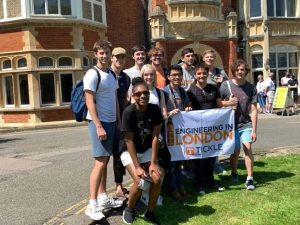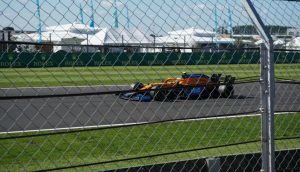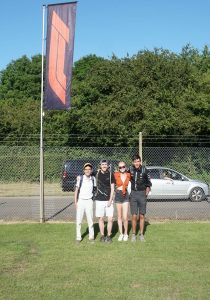Eleven students spent five weeks in London, England, studying thermodynamics and circuits. Students learned about the origin of the industrial revolution, the “second” industrial revolution of electrical machines, and the birth of the computer age through visits to important historical locations in the region. Below are firsthand accounts of several students’ adventures abroad.
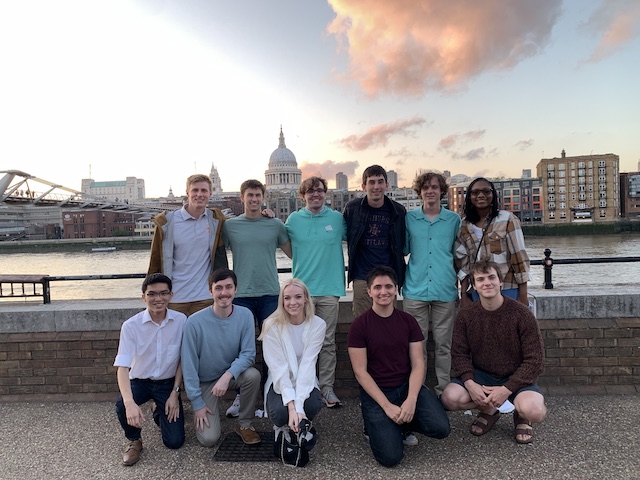
Hello, my name is Derrick Bailey. I am a rising sophomore majoring in aerospace engineering at the Tickle College of Engineering. I had the opportunity to go on the engineering in London trip this summer. During this trip I was able to experience many things and see the amazing marvels of past engineers.
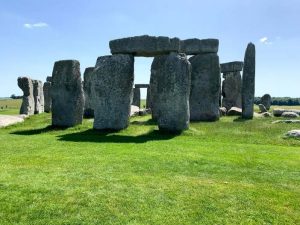
Learning abroad teaches you much more than a typical classroom experience. Anyone can pick up a book and take the time to learn one of these subjects. Studying abroad shows the real-world applications of what you are learning and lets you meet people whose lives revolve around what you are learning. A prime example of this was when we went to the London Water and Steam Museum at Kew Bridge. At the museum, we were led by a man named Richard. Richard had been volunteering and working at the museum since he was 13 years old. As he took us around, we really got a feel for how these giant machines worked and their significance in human history. The difference between seeing on paper how something works and actually viewing it in person is astronomical and significantly contributes to your understanding of a topic.

We also got to visit places unrelated to the course. My favorite place we visited was Saint Paul’s Cathedral. Saint Paul’s is the most beautiful building I have ever seen. Its design is magnificent, and it captivates you even across the river Thames. However, my favorite part about Saint Paul’s isn’t how it looks. It was what our tour guide told us. Apparently during the second world war every day the first place Churchill would ask about when the previous days damage was reported was Saint Paul’s Cathedral. Churchill believed that if Saint Paul’s was to fall then the hope of the British people would also fall. This idea of the hope engineering can give to people really stuck with me and made me think about all the other hopes and trusts people put into engineer’s work. It made me really realize the importance of being an engineer.
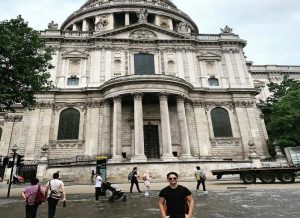
Hello, my name is Ariel Lane. I am a junior majoring in mechanical engineering with a minor in biomedical engineering. I was granted the opportunity to be a student in the Engineering in London study abroad program partially due to the generous contributions of all the sponsors. Throughout the program, we were taken to many different memorable museums, parks, and other locations around London. The city grasped my attention due to it being so well preserved. Most of the individual places we visited captured my attention due to the rich history that correlates between science, engineering, and some of the most famous inventions used throughout world history.
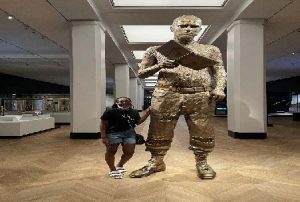
The one place we visited that really intrigued me was the National Museum of Science. This museum was so fascinating to me because it had so many exhibits revolving around things that I am interested in.
The first thing that caught my eye was a space exhibit that detailed all the different technological advancements in the space race. Next, there were displays that showed the various improvements of the locomotives that were used in cars and then space machines. Another exhibit that I found interesting was the science and technology exhibit. It included things like a collection of pendulum clocks, an enigma machine, and Babbage’s #2 Difference Engine. Lastly, the exhibit that I spent most of my time in was the medical exhibit. Many different displays caught my attention on this floor. There were things like the first MRI machine, a portable x-ray machine, the beginning of the birth control pill era, and the original methods of medical procedures. The exhibits in this museum all sum up my many different interests in engineering. Even though I am interested in aerospace and other technological fields, I chose to minor in biomedical engineering because I have more of a determination to help others and a curiosity of the way the human body functions.
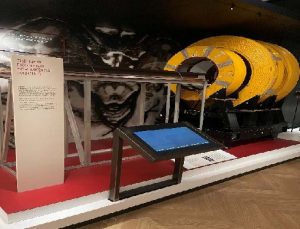
Because of EIL, I got to visit Scotland. My family lineage can be traced back to the city of Edinburgh, Scotland. More specifically, I am a descendant of Robert the Bruce, who is an important historical figure of Scotland. He was the King of Scots for 23 years, and he can be found on one of two statues on the front of Edinburgh Castle. One also might recognize the name from the movie Braveheart in which he was one of the antagonists. Because of all of this, Scotland was the one place that I wanted to venture out to during this trip. I knew I would like Edinburgh, but it was highly gratifying to have loved the city even more than I thought I was going to.
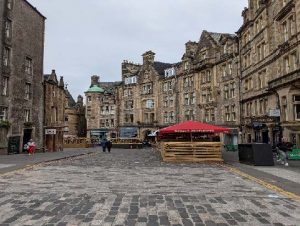
Not only did I spend time in the city of Edinburgh. I also went on a 12-hour bus tour of the Scottish Highlands. I had absolutely no idea that Scotland had such magnificent and towering mountains. This unbelievable landscape expanded my love for this country even more than I thought possible, and at this point, I almost want to move to Edinburgh and go backpacking through the Highlands every weekend. I am definitely going to be coming back to visit again at the very least, and it makes me so proud to have come from this beautiful country.
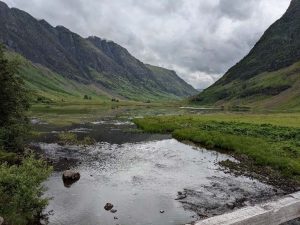
As an aerospace engineering student, one of the most influential places we visited was the London Museum of Water & Steam. There, we witnessed the first real engines that humanity has ever made, gigantic steam engines that pumped water out of mines and clean water through cities. This wasn’t just an idle museum tour. We saw these machines whirl to life, and it was awe-inspiring to see these ancient beasts work their magic. With mechanical engineering being the foundation for my major, it is remarkable to see the initial spark of what would become such a broad, important field.
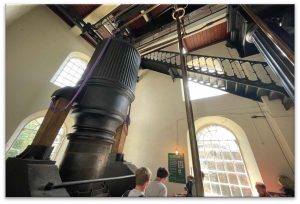
Now to a more modern era, F1 racing. Compared to the cumbersome pieces of machinery that were the old steam engines, these modern engines are much leaner, smaller, and have a fantastic roar to them. We got lucky that the British Grand Prix fell right in the middle of our program. Four of us were able to go up to Silverstone Circuit. We were able to not only watch these cars go around, but to also compare them to cars in other programs, like the F2 and W Series. Seeing just how much faster F1 cars are than these already fast race cars shows just how much time and energy gets poured into engineering these beasts to be the fastest machines on Earth.
On Saturday the 17th, A group of students and I traveled to the Silverstone Circuit in Northampton to watch the F1 race. I have never been to a race and had no idea what to expect. Being around the track at a sold-out event was super exciting, and seeing the engineering marvels that are the F1 cars was unreal. We participated in a competition where we were pit crews racing other pit crews. We changed a tire in 2.821 seconds .021 seconds off the weekend leaderboard and first in our group. We watched a classic car race and the f2 race. There was also a Battle of Britain memorial flight where we got to see restored Supermarine Spitfires. Then finally we watched the F1 qualifier. The speed and the noise from those cars is something which can only be experienced to its fullest in person. We even saw the start of a crash which is amazing. It was a full day which I was thoroughly exhausted from.
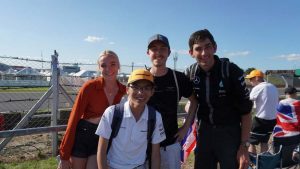
If I had to summarize this trip in one word, it would be encouraging. This past year and a half have been sad and uninspiring, especially for kids in college who gain so much from just being on-campus learning and making connections. Sitting at home staring at a computer screen for hours almost every day trying to learn through a video conference where everyone has internet connection issues can burn out anyone. At first, I enjoyed being at home, but I soon felt the burnout and just started wishing campus would open up again. It’s been over a year since I had a real class, and coming to London this summer made me excited to learn again. Having an in-person lecture where I can really engage with the students and professors encouraged me to work hard and start experiencing real life again, instead of just sitting at home like I’ve gotten so used to doing.
Along with encouraging me to work hard in school again, this trip encouraged me to step out of my comfort zone. I’ve never really been the type of person to go out and explore all the time or participate in group activities, I really value my alone time, but I tried something different in London. I went out every day, whether it was by myself or with a group, and I ate different kinds of food, listened to new music, and developed a sudden new interest in steam engines. Overall, this trip has encouraged me to keep going because better days are ahead where I can meet even more people and learn some amazing things.
While we were able to visit many different interesting sites during our Engineering in London study abroad program, one site really stood out to me. This site was Kew Bridge Steam Museum. Our tour of Kew Bridge Steam Museum was very interesting and extensive, with our tour guide explaining the engineering and history behind all the steam engines in the museum. During this tour, we were able to see rotative engines in action. Having learned about the history of steam engines during our thermodynamics lectures, it was amazing to see the designs of these centuries old steam engines still working. We were also able to see the Allen Diesel Engine while on the tour, along with visiting old blacksmith shops that were devastated by bombs during the World Wars.
The real eye-opening experience of this tour, though, was being able to see the Cornish Engines. Specifically, the Bull Engine, the Grand Junction 90 Inch Engine, and the Grand Junction 100 Inch Engine. The Bull Engine was restored to working order, and it was a spectacle to see in action. While the Bull Engine was not working as fast as it normally would back in the nineteenth century, it was still crazy to see how quickly the Bull Steam Engine could move such a large weight. Being able to see the Bull Engine from different angles on different floors allowed me to see all the different components and dynamics of the engine. Additionally, the Grand Junction 90 Inch Engine and Grand Junction 100 Inch Engine was one of my favorite moments of the tour. The sheer size of these engines was amazing to see. Having to climb several floors up to see the top of the engine, I was able to see how the massive scale of these engines. While the engines were no longer in use, it was still amazing to think that engines that big were being used centuries ago.
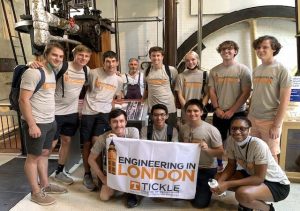
This study abroad has really helped reinforce my decision to become an engineer. Being able to see such important engineering innovations in person on this trip has showed me how important the work engineers do is. Learning thermodynamics and circuits and seeing and touring different historical engineering sites, combined with building friendships and connections with my professors and classmates, has made this study abroad an experience that I will never forget.
I had never thought that I wanted to do a study abroad program. I saw an email that UT offered two classes that were required for my major in London. I thought, “huh, this would be a fun opportunity.” So, I decided to apply and go through the process. The pandemic did put a damper on things, and I must say that I questioned if this was right for me. After this trip, I feel like I understand thinking like an engineer so much better. Such a personalized experience with circuits and thermodynamics allowed me to excel in my classes. Whether it is working through circuit problems or figuring out the efficiency of an engine, I feel confident that Dr. Berry and Dr. Parsons have helped me to become a better engineer.
Being in London and getting to see machines that are the genesis of engineering really allowed me to understand all of the problems that we face today. To see the Bombe machine in action was absolutely fascinating. Turing helped so much in the advancement of computers, and I think that sometimes people do not see how far we have come as a society. My favorite things to see were the steam engines. These behemoths of machines were not that efficient, but they are the predecessors to all engines today. To see a four-story tall Cornish steam engine is unbelievable. To think that those things moved at one point is a testament to mankind and all of our advancements. I’ve made wonderful friends along the way through this program and have thoroughly enjoyed my time in London. I would recommend studying abroad to anyone who is in college. And special thanks to Jim Crum and International Paper for funding my extravagant vacation.
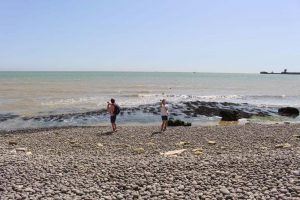
The Engineering in London program has been such a great opportunity for me to complete my courses through a historical perspective. The history of the industrial revolution brings these engineering principles to life. My favorite place we visited was in Kew, the London Museum of Water and Steam. The massive steam engines were so fascinating to see, and they demonstrated the process we have been learning about in our class.
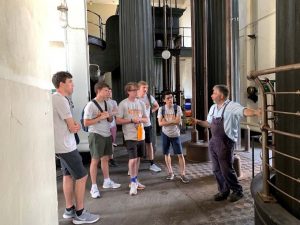
The largest steam engine at the museum was the Grand Junction ninety-inch engine. It was stretching four stories high and was built within a house. As a mechanical engineering student, it was very encouraging to get to see the engines of the past. Studying great inventions and learning about inventors inspired me within my own career path as a mechanical engineer. I am very thankful for the opportunity to spend my summer in London studying engineering.
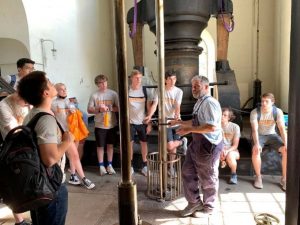
My name is Dean Vookles, and I am an electrical engineering major in my junior year of college. During our stay in England, we visited many museums and historical landmarks. Many of them were spectacular, but only some gave you a vague idea of what Engineering was like in the past. I say that because it is hard to imagine the actual design process when viewing it all as finished engines, machines, and bridges. Therefore, my favorite part of our museum visits is when we went into the workshops of the London Museum of Water & Steam.
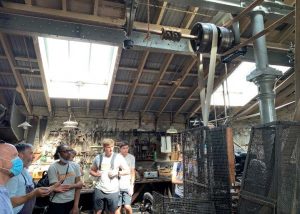
When you walk into the workshop you can see there is a coat of rust and dust stuck to everything in sight. The age on these objects varies, some showing recent use and some showing years of neglect. All the machines still run-on engine-powered belts lined across the ceiling. While inside, you could imagine a WWII engineer cutting down parts for a tank, or even a mechanic boring holes into pipes for a steam engine. That is why this trip is special. We get to have a tactile and visual exploration of the history of Engineering in London.
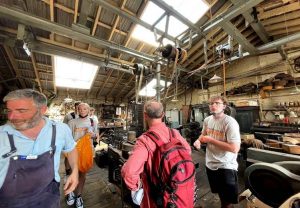
My name is Dylan Sullenberger. I am a junior Computer Science major with a minor in Mathematics. This summer, I was given the opportunity to participate in the Engineering in London program. I was honored to be part of such a program, and it is one of the most lifechanging experiences I have ever had. I got to see and do so many things in London that I would not have gotten to do had it not been for this program. The city is home to some of the coolest places I have ever been to. In particular, we went to a few museums and landmarks that were directly related to the subjects that we were studying at the time, and it was very impactful and helpful to be able to connect what we were learning in class to what we were seeing in London.
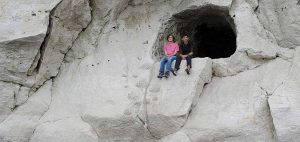
My favorite place we toured was Bletchley Park, the site where Alan Turing and his team cracked the German Enigma machine (among other German codes) during World War II. We got to see a working Bombe machine, the machine Turing invented to break the Enigma code, as well as many early computer models while we were there. As a Computer Science major, this directly related to a lot of things I have learned over the years, and it was always a dream of mine to see it in person. I could not be more grateful for the opportunity that I have been given to be part of this trip, and I absolutely recommend lots of people to try to take part in the trip in the future.
